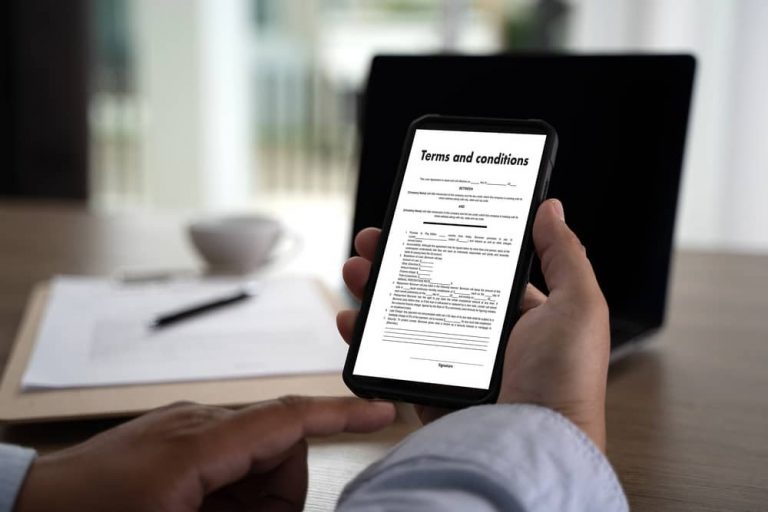What Content Creators Need to Know About AI and the Law in 2025
As technology has advanced and AI use has exploded it’s becoming easier to create content at scale. Whether you’re writing blog posts,designing graphics, or editing videos, AI tools can help you save time and get more done.
While technology is advancing quickly, legislation is trying to keep up.
If you’re a blogger, influencer, or digital creator, you can’t afford to ignore these new laws. In both the U.S. and Europe new legislation aims at setting clear rules about what you need to disclose and who owns AI-generated content.
In this post, I’ll walk you through:
- What the laws actually say (in plain English)
- When and how to disclose AI use
- What counts as your work under copyright law
- And what’s coming next, so you can stay ahead
Let’s get started….
AI-Generated vs. AI-Assisted Content – what’s the difference?
Before we dive into the legal side of things, it’s important to understand how we categorize AI-created content. AI Created content typically falls into two different categories, AI-Generated and AI-Assisted. The difference can matter a lot, particularly when it comes to copyright and disclosure rules.
AI-Generated Content
This is content created entirely by an AI tool with little or no human involvement in the output. Keep in mind your prompt is the input- it doesn’t matter how good the prompt is, using the output without edits means it’s considered AI-Generated Content.
Examples:
- A blog post written by ChatGPT and then published without changes
- A video narration generated by AI voice software without any human input
Why it matters: Not only do you not own the copyright of AI-Generated Content, meaning anyone can steal it and you will have little recourse, but you may need to disclose that AI created it.
AI-Assisted Content
This is content where you used AI to help, but a human (you!) made the final decisions and edits.
Examples:
- Using AI to generate an outline, but the article is written and edited by you
- Getting headline suggestions from AI but choosing and rewriting them yourself
Why it matters: You can likely claim the copyright to the content and disclosure may not be legally required (but it’s still a smart move).
Here’s a quick overview (this table was generated with the help of AI):
| Type of Content | Who Created It? | Copyright Protection? | Should You Disclose? |
| Fully AI-generated | AI only | ❌ No | ✅ Yes, in some cases it’s legally required but it’s a smart move either way |
| AI-assisted | AI + human (you) | ✅ Maybe (if enough human input) | ⚠️ Optional, but often recommended |
| Human-created | Human only | ✅ Yes | ❌ Not required |
EU AI Act: When You Must Disclose AI Use
The European Union has officially passed the EU AI Act, the first law of its kind. While most of the law’s rules don’t take full effect until August 2026, parts of it are already active—and it’s setting the tone for new legislation around the world.
Even if you don’t live in the EU, if your content can be seen there (like a blog or YouTube video), it’s smart to understand what’s expected.
What the EU AI Act Requires from Creators
Under the Act, you must disclose, if the content is meant to inform the content, when content is generated or heavily modified by AI.
This includes:
- AI-generated blog posts or articles
- AI-generated images or deepfake-style videos
- AI-altered audio (like voice cloning)
If people might think it’s human-made, and you’re sharing it with the public, you must say it’s AI-generated.
The Exception: Editorial Responsibility
If you’ve reviewed, edited, and taken responsibility for AI-assisted content, and it reflects your voice and intent, you may not need to disclose under the EU rules. But transparency still builds trust and helps to stake your copyright claim if someone tries to steal your content.
What Disclosures May Look Like for Creators
Even if you can copyright AI-assisted content, it’s still smart to be upfront with your audience.
When Should You Disclose AI Use?
In the U.S., disclosure isn’t (yet) legally required in most cases. But it is required: under the EU AI Act when content is synthetic and meant for public information
Otherwise, disclosure is just a smart move.
Why? Because it:
- Builds trust with your audience
- Stakes your claim to ownership
- Helps clarify how your content was created if someone tries to copy it
How to Write an AI Disclosure
Keep it clear, friendly, and simple. Here’s a basic example:
Example Disclosure (Blog Post): This post was created with the help of AI tools and heavily edited by a human (me!) to reflect my personal experience and expertise.
Where Should You Put It?
- In blog posts: Above the fold or clearly noted near the content
- In emails: In the Footer or near the content section
- In videos or podcasts: Mention in the intro or description
- In legal pages: Include an AI disclosure in your site’s disclaimers or privacy policy
Want it done for you? My Website Legal Templates Bundle includes a ready-made AI Disclosure Template.
What’s Coming: New AI Laws in Colorado, and Around the World
The EU AI Act may be grabbing headlines, but it’s not the only game in town. U.S. states are starting to pass their own AI laws—and more are on the way.
Here’s a quick look at what’s happening:
Colorado AI Act (Passed 2024 – Effective 2026)
- First comprehensive AI law in the U.S.
- Applies to both developers and deployers (yes, that can include content creators using AI for business)
- Focuses on high-risk AI systems, especially those making decisions that affect people’s rights or finances
- Requires:
- Impact assessments for high-risk systems
- Notice and explanation when AI is used in high-stakes decisions
- Risk mitigation practices for both builders and users of AI
Takeaway: If you’re using AI in ways that affect hiring, lending, or other “important” decisions, you’ll need to show you’re using it responsibly.
California AI Legislation
- California is working on multiple AI-related laws
- Focus: Preventing discrimination in automated decision systems
- Laws target businesses using AI in employment, housing, or similar services
Takeaway: More transparency laws are coming—and businesses of all sizes may be included.
The Global Trend: Transparency + Human Oversight
From the EU to U.S. states, the pattern is clear:
- Be transparent about AI use
- Make sure all content is reviewed by a human and ideally undergoes editorial review.
- Respect people’s rights when AI is involved
Even if you’re just using AI to write emails or create content, it’s worth getting ahead of these new laws.
Bottom Line for Creators Using AI
AI is an amazing tool—but like any tool, how you use it matters. With new laws rolling out fast, it’s smart to stay informed and take simple steps now to protect your content and your business.
Here’s what you need to remember:
- Just because you came up with the prompt, doesn’t mean you can claim AI-Generated Content as Yours: You can’t copyright content fully written by AI. Use your voice, experiences, edits, and input to make it legally yours.
- Disclose when appropriate: If AI helped, say so. This is especially important for transparency.
- Document your process: Keep records of how you used AI and how you changed or improved the content.
- Keep up with new laws: Colorado already has an AI rule; more are coming. Being proactive puts you ahead.
Next Step for You:
Want an AI Disclosure you can just drop into your site or blog posts? 📄 Grab the Website Legal Templates Bundle →






